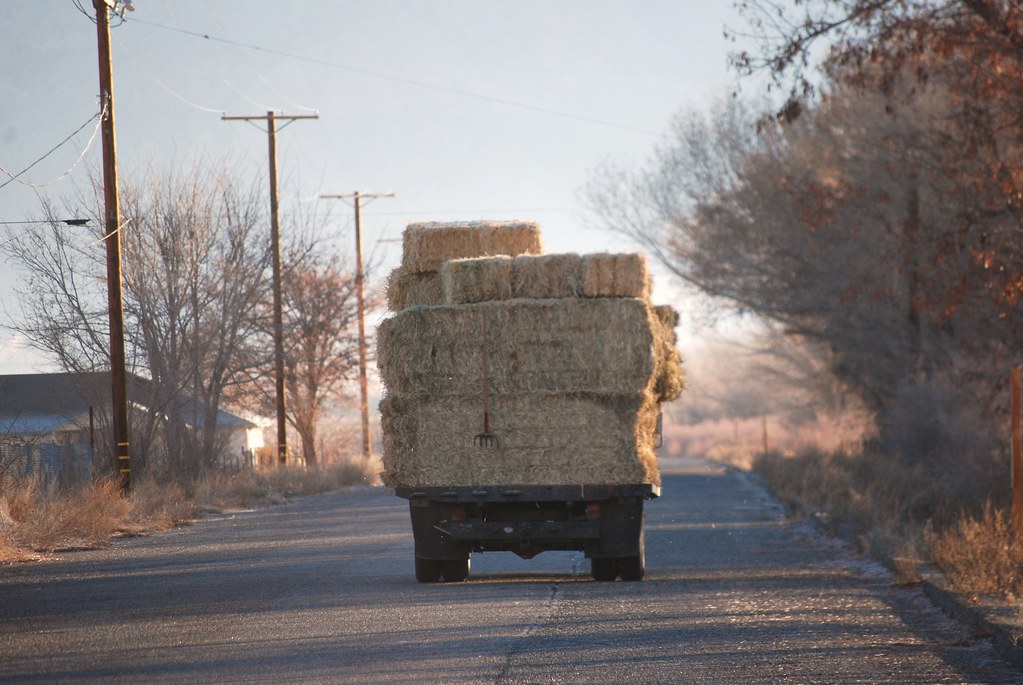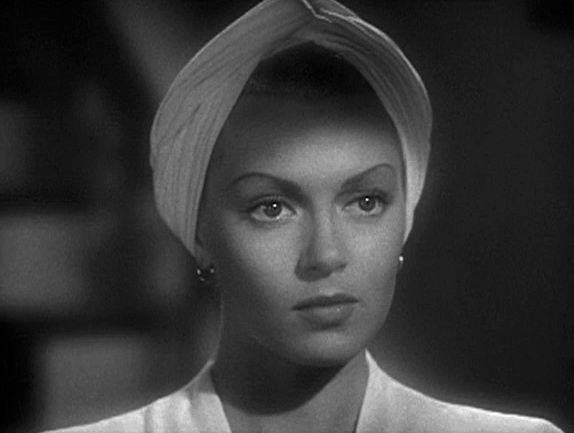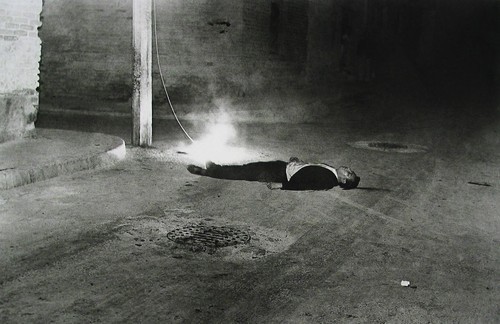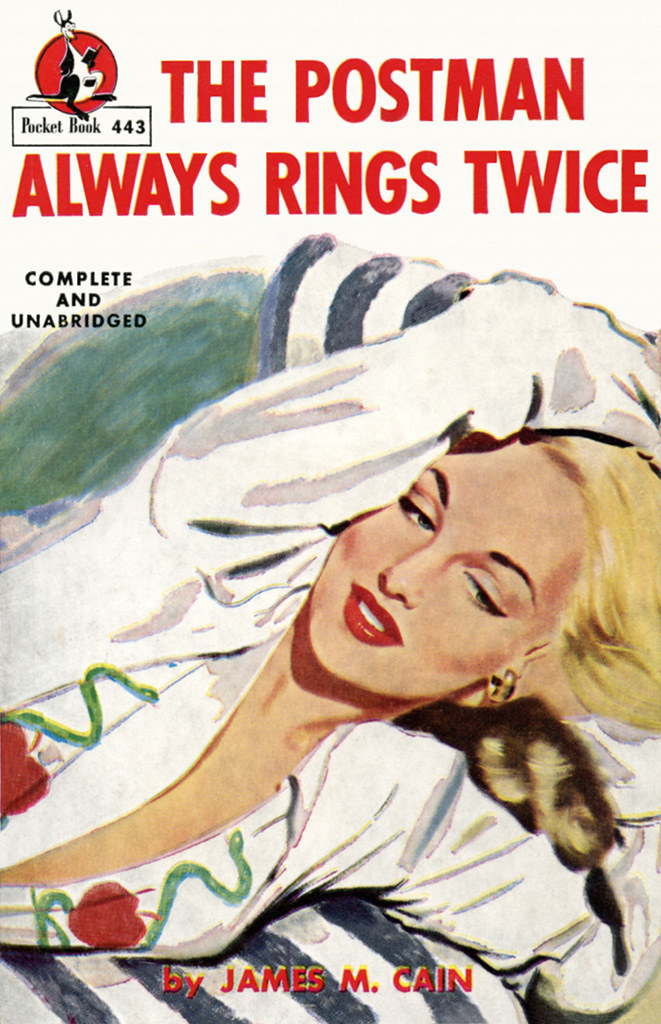.

Triple X Root Beer, East Marginal Way near Boeing Field, Seattle: photographer unknown, 15 April 1936 (Seattle Municipal Archives)
They threw me off
the hay truck about noon. I had swung on the night before, down at the
border, and as soon as I got up there under the canvas, I went to
sleep. I needed plenty of that, after three weeks in Tia Juana, and I was still getting it when they
pulled off to one side and let the engine cool. Then they saw a boot
sticking out and threw me off. I tried some comical stuff, but all I got
was a dead pan, so that gag was out. They gave me a cigarette, though,
and I hiked down the road to find something to eat.
That was when I hit the Twin Oaks Tavern. It was nothing but a roadside sandwich joint, like a million others in California. There was a lunchroom part, and over that the house part, where they lived, and off to one side a filling station, and out back a half dozen shacks that they called an auto court. I blew in there in a hurry and began looking down the road. When the Greek showed, I asked if a guy had been by in a Cadillac. He was to pick me up here, I said . . .
Then I saw her. She had been out back, in the kitchen, but she came in to gather up my dishes. Except for the shape, she really wasn't any raving beauty, but she had a sulky look to her, and her lips stuck out in a way that made me want to mash them in for her.
"Meet my wife."
She didn't look at me. I nodded at the Greek, gave my cigar a kind of wave, and that was all. She went out with the dishes, and so far as he and I were concerned, she hadn't even been there . . .
James M. Cain (1892-1977): from The Postman Always Rings Twice (original title: Bar-B-Q), 1934
That was when I hit the Twin Oaks Tavern. It was nothing but a roadside sandwich joint, like a million others in California. There was a lunchroom part, and over that the house part, where they lived, and off to one side a filling station, and out back a half dozen shacks that they called an auto court. I blew in there in a hurry and began looking down the road. When the Greek showed, I asked if a guy had been by in a Cadillac. He was to pick me up here, I said . . .
Then I saw her. She had been out back, in the kitchen, but she came in to gather up my dishes. Except for the shape, she really wasn't any raving beauty, but she had a sulky look to her, and her lips stuck out in a way that made me want to mash them in for her.
"Meet my wife."
She didn't look at me. I nodded at the Greek, gave my cigar a kind of wave, and that was all. She went out with the dishes, and so far as he and I were concerned, she hadn't even been there . . .
James M. Cain (1892-1977): from The Postman Always Rings Twice (original title: Bar-B-Q), 1934

Hay truck in Lone Pine, California. This picture has a story: I had been out taking pictures in this field behind the Frontier Motel in Lone Pine in the early morning. I had just stepped into the street and fell. I was there fallen down (hit my camera lens on the ground) and this truck went by me and just waved. I snapped a picture of it going down the road. It ended up being one of my favorite pictures. The lens still works but it will no longer zoom: photo by pamelainob (Pamela Schreckengost), 24 December 2008
Tom Wolfe on The Postman
Cain was one of those writers who first amazed and delighted me when I was old enough to start looking around and seeing what was being done in American literature. Steinbeck, Farrell, Saroyan, Faulkner, and Thomas Wolfe were some of the others. But Cain -- momentum was something he had a patent on. Or maybe acceleration is the word. Picking up a Cain novel was like climbing into a car with one of those Superstockers who is up to forty by the time your right leg is in the door. Today, twenty years later, I have read The Postman Rings Twice, Double Indemnity and Mildred Pierce again . . . and I am still amazed and delighted . . . partly because I can now see how complex Cain's famous "fast-paced," "hard-boiled" technique really is . . .
Cain was a bit notorious in the 1930s and 1940s as a novelist of "sex and violence." I can remember that myself. I suppose a lot of critics never got beyond that notion. The Postman Always Rings Twice was the reigning hot, taboo novel before Forever Amber. It was banned in Canada; the old Hays Office blocked MGM's first efforts to bring it out as a movie -- and so on. God knows how many concupiscent young men stole hornily to pages 71 and 72 of the original edition, to the "Rip Me" scene, in which a man and a woman are trying to make a murder look like an automobile accident:
"I began to fool with her blouse, to bust the buttons, so she would look banged up. She was looking at me, and her eyes didn't look blue, they looked black. I could feel her breath coming fast. Then it stopped, and she leaned real close to me.
"'Rip me! Rip me!
"I ripped her. I shoved my hand in her blouse and jerked. She was wide open, from her throat to her belly.
"'You got that climbing out. You caught it in the door handle.'
"My voice sounded queer, like it was coming out of a tin phonograph.
"'And this you don't know how you got.'
"I hauled off and hit her in the eye as hard as I could. She was right down there at my feet, her eyes shining, her breasts trembling, drawn up in tight points, and pointing right up at me. She was down there, and the breath was roaring at the back of my throat like I was some kind of a animal, and my tongue was all swelled up in my mouth . . . "
Those two erect nipples were the most famous literary aureolae of the 1930's. They had a lot of people trembling in addition to the two lovebirds themselves. Yet . . . literary is what they are.
Tom Wolfe, from Introduction to Cain X 3, 1969

Ceramic representation of Mictlantecuhtli, Aztec god of the dead and king of Mictlan (Chicunauhmictlan), lowest and northernmost section of the underworld, recovered during excavation of the House of Eagles in the Templo Mayor, now on display at the museum of the Templo Mayor, Mexico City: photo by Thelmadatter, 23 March 2008
Cain was one of those writers who first amazed and delighted me when I was old enough to start looking around and seeing what was being done in American literature. Steinbeck, Farrell, Saroyan, Faulkner, and Thomas Wolfe were some of the others. But Cain -- momentum was something he had a patent on. Or maybe acceleration is the word. Picking up a Cain novel was like climbing into a car with one of those Superstockers who is up to forty by the time your right leg is in the door. Today, twenty years later, I have read The Postman Rings Twice, Double Indemnity and Mildred Pierce again . . . and I am still amazed and delighted . . . partly because I can now see how complex Cain's famous "fast-paced," "hard-boiled" technique really is . . .
Cain was a bit notorious in the 1930s and 1940s as a novelist of "sex and violence." I can remember that myself. I suppose a lot of critics never got beyond that notion. The Postman Always Rings Twice was the reigning hot, taboo novel before Forever Amber. It was banned in Canada; the old Hays Office blocked MGM's first efforts to bring it out as a movie -- and so on. God knows how many concupiscent young men stole hornily to pages 71 and 72 of the original edition, to the "Rip Me" scene, in which a man and a woman are trying to make a murder look like an automobile accident:
"I began to fool with her blouse, to bust the buttons, so she would look banged up. She was looking at me, and her eyes didn't look blue, they looked black. I could feel her breath coming fast. Then it stopped, and she leaned real close to me.
"'Rip me! Rip me!
"I ripped her. I shoved my hand in her blouse and jerked. She was wide open, from her throat to her belly.
"'You got that climbing out. You caught it in the door handle.'
"My voice sounded queer, like it was coming out of a tin phonograph.
"'And this you don't know how you got.'
"I hauled off and hit her in the eye as hard as I could. She was right down there at my feet, her eyes shining, her breasts trembling, drawn up in tight points, and pointing right up at me. She was down there, and the breath was roaring at the back of my throat like I was some kind of a animal, and my tongue was all swelled up in my mouth . . . "
Those two erect nipples were the most famous literary aureolae of the 1930's. They had a lot of people trembling in addition to the two lovebirds themselves. Yet . . . literary is what they are.
Tom Wolfe, from Introduction to Cain X 3, 1969

Ceramic representation of Mictlantecuhtli, Aztec god of the dead and king of Mictlan (Chicunauhmictlan), lowest and northernmost section of the underworld, recovered during excavation of the House of Eagles in the Templo Mayor, now on display at the museum of the Templo Mayor, Mexico City: photo by Thelmadatter, 23 March 2008
James M. Cain on The Postman
CAIN
One personal reason for being pleased at being in California was that
I couldn't seem to write about New York. Those funny New York taxi
drivers weren't funny to me. I couldn't manage the New York idiom. If
you can't write like New York, you have no business living in New York
and making New York the locale of your stories. There would be a falsity
to it. When I got out to California, I found the people there spoke my
lingo. They use a little better grammar in California than they do in
Maryland, but what was even better for me was the roughneck who uses
fairly good grammar. I found by putting the story in his mouth it wasn't
so knobby and gnarled for the reader. It would kind of go along . . .
easy reading. So, suddenly, out there in California I began writing in
the local idiom. Everything broke for me.
INTERVIEWER
You were nearly in your forties then. Wasn't this quite late to think of becoming a novelist?
CAIN
A lot of novelists start late -- Conrad, Pirandello, even Mark Twain.
When you're young, chess is all right, and music and poetry. But
novel-writing is something else. It has to be learned, but it can't be
taught. This bunkum and stinkum of college creative writing courses! The
academics don't know that the only thing you can do for someone who
wants to write is to buy him a typewriter.
INTERVIEWER
Do you have any memory of the origins of The Postman Always Rings Twice?
The execution of Ruth Snyder in the electric chair at Sing Sing Prison, Ossining, New York, 12 January 1928: photo by Tom Howard for New York Daily News (image by RaseaC, 7 July 2010)
CAIN
Oh yes, I can remember the beginning of The Postman. It was
based on the Snyder-Gray case, which was in the papers about then. You
ever hear of it? Well, Grey [sic] and this woman Snyder killed her husband for
the insurance money. Walter Lippmann went to that trial one day and she
brushed by him, what was her name? Lee Snyder. [sic: Cain refers here to Ruth Snyder.] Walter said it seemed
very odd to be inhaling the perfume or being brushed by the dress of a
woman he knew was going to be electrocuted. So the Snyder-Grey [sic] case
provided the basis. The big influence in how I wrote The Postman Always Rings Twice
was this strange guy, Vincent Lawrence, who had more effect on my
writing than anyone else. He had a device which he thought was so
important -- the “love rack” he called it. I have never yet, as I sit here,
figured out how this goddamn rack was spelled . . . whether it was
wrack, or rack, or what dictionary connection could be found between the
word and his concept. What he meant by the “love rack” was the poetic
situation whereby the audience felt the love between the characters. He
called this the “one, the two and the three.” Someone, I think it was
Phil Goodman, the producer and another great influence, once reminded
him that this one, two, and three was nothing more than Aristotle's
beginning, middle, and end. “Okay, Goody,” Lawrence said, “who the hell
was Aristotle, and who did he lick?” I always thought that was the
perfect Philistinism.

Untitled (This is a picture of one of so many poor people who, to this day, continue to steal electricity in Mexico City. They connect a cable to their home and then climb up the post to hook into the system, but they often get electrocuted): photo by Enrique Metinides, n.d. (via American Suburb X)
INTERVIEWER
How did it work?
CAIN
Lawrence would explain what he meant with an illustration, say a picture like Susan Lenox,
where Garbo was an ill-abused Swedish farm girl who jumped into a wagon
and brought the whip down over the horses and went galloping away and
ended up in front of this farmhouse which Clark Gable, who was an
engineer, had rented. And he takes her in. He's very honorable with her,
doesn't do anything, gives her a place to sleep, puts her horses away
and feeds them . . . He didn't have any horses himself, but he did have
two dozen ears of corn to feed hers. Well, the next day he takes the day
off and the two of them go fishing. He's still very honorable, and
she's very self-conscious and standoffish. She reels in a fish (they
used a live fish -- must have had it in a bucket). She says, I'll cook him
for your supper. And with that she gave herself away; his arms went
around her. This fish, this live fish, was what Lawrence meant by a
“love rack”; the audience suddenly felt what the characters felt. Before
Lawrence got to Hollywood, they had simpler effects, created by what
was called the mixmaster system. You know, he'd look at her
through the forest window, looking over the lilies, and this was
thought to be the way to do it; then they'd go down to the amusement
park together and go through the what do you call it? Shoot de chute?
INTERVIEWER
Tunnel of love.

Tunnels of Love, Coney Island: photo by Irving Underhill (1872-1960), 1929 (Brooklyn Museum/Brooklyn Public Library, Brooklyn Collection)
CAIN
The tunnel of love, and all the rest of it. It was what was called
the montage, and at the end of the montage they were supposed to be in
love. Lawrence just wouldn't have this. He said this love rack had to be
honest, it had to be real poetry. He revolutionized picture-writing in
Hollywood; he hadn't been out there long before they all accepted his
goddamn love rack.
The other important influence at this time was Bob Riskin, who had
been detailed by Harry Cohn, the President of Columbia, to talk to me
and find out whether I ticked. Riskin, whose wife was Fay Wray -- the girl
who did the screech in the original King Kong -- was the ace writer at Columbia; he did all the Frank Capra pictures, like It Happened One Night.
A tremendously successful guy. He said to me, You have the strangest
mind. The problem is, the algebra must be right. He said, You seem to
think that there's some way you can transform this equation, and
transform it, and transform it, until you arrive at the perfect plot.
It's not like that. The algebra has to be right, but it has to be your
story. I made algebra of it all right, but it was my story, too,
especially with the lingo in the mouth of a hobo with good grammar, like
they have in California.

Cropped screenshot of Lana Turner from the trailer for the film The Postman Always Rings Twice (1946): image by Rossrs, 12 July 2007
Screenshot of Lana Turner from the trailer for the film The
Postman Always Rings Twice (1946): image by Wedg, 7 May 2009


John Garfield and Lana Turner: screenshot from the film The Postman Always Rings Twice (1946): image by herbynow, 24 Marchlinfante, 16 September 2006

A high voltage cable snaps loose and hits a man walking along Tacaba Street. Despite being badly electrocuted, he survived: photo by Enrique Metinides, 1958 (via American Suburb X)

Lana Turner's hand just after she drops the lipstick and dies: screenshot from the film The Postman Always Rings Twice (1946): image by linfante, 16 September 2006

Cover art by Tom Dunn for Pocket Books edition of The Postman Always Rings Twice (1947): image by McClaverty, 21 June 2010

Untitled
(Jesus Bazaldua Barber, a telecommunications engineer for Telefonos de Mexico, fatally
electrocuted by more than 60,000 volts whilst installing a new phone
line on the 13th km. of the Mexico City-Toluca highway): photo by Enrique Metinides, 1971 (via American Suburb X)
They took him in, put him on a
table, and wheeled him in an operating room. Cora and myself sat out in
the hall. Pretty soon a nurse came and sat down with us. Then the cop came, and he had a sergeant with him. They kept looking at me. Cora was telling the nurse how it happened. "I was in there, in the bathroom
I mean, getting a towel, and then the lights went out just like
somebody had shot a gun off. Oh my, they made a terrible noise. I heard
him fall. He had been standing up, ready to turn on the shower. I spoke
to him, and he didn't say anything, and I didn't know what had happened.
I mean I thought he had been electrocuted or something . . ."
from The Postman Always Rings Twice

Statue of Mictlantecuhtli, Aztec god of the dead, museum of the Templo Mayor, Mexico City : photo by Jamie Dwyer, 19 August 2008

Extra-wide hay transport truck in heavy fog as seen on Highway 4 in the rural municipality of Lacadena, Saskatchewan: photo by CanadaGood (Gregory Melle), 13 December 2010





6 comments:
The first five minutes of The Postman
Tom,
Great opening 5 minutes of The Postman -- Johnny really liked it too. The don't make movies like that nowadays, do they --nor write like James M. Cain either. What to make of Hollywood's change from riding in hay truck to District Attorney's car?
3.17
light coming into sky above still black
plane of ridge, red-tailed hawk calling
in foreground, wave sounding in channel
and was not but who was for,
“life-size” more than
also noted, is soon to fall
into place, than this
silver of sunlight reflected in channel,
fog on horizon to the left of the point
years ago a friend's son
as part of his high-school
celebration
went on his senior class trip
to Mexico
in the place where they were staying
as I recall it was in Mexico City
the electric wires were bare copper
and ran on the walls (exposed) to the various
plugs, switches, lights, etcs..
he on the balcony touched the wires and
as he was grounded
was electrocuted dead !
I've always loved that hay truck scene. Hadn't read the Wolfe piece before. Thank you Tom.
“Mr. Cain is a real writer who can construct and tell an exciting story with dazzling swiftness—one of our hard-boiled novelists whose work has a fast rhythm that is art”
—William Rose Benét (Quotation opposite the frontispiece to Cain’s 1944 book of short novels titled Three of a Kind—“Career in C Major,” “The Embezzler,” “Double Indemnity”).
I don’t remember where I bought this treasure but your post sent me scrambling to find it in my haplessly disorganized library; the segments of the Paris Review interview can be further illuminated if one accesses this link to a pdf file containing the entire preface to Cain’s book.
Many thanks to all, from the sizzled remains of a soft-boiled heart.
Post a Comment